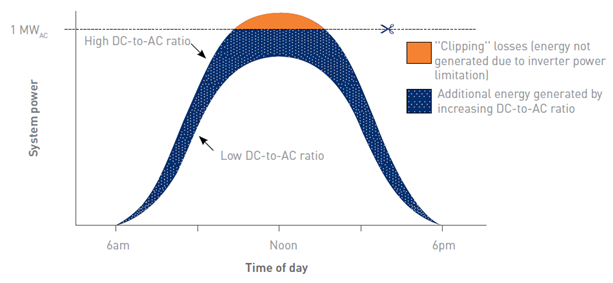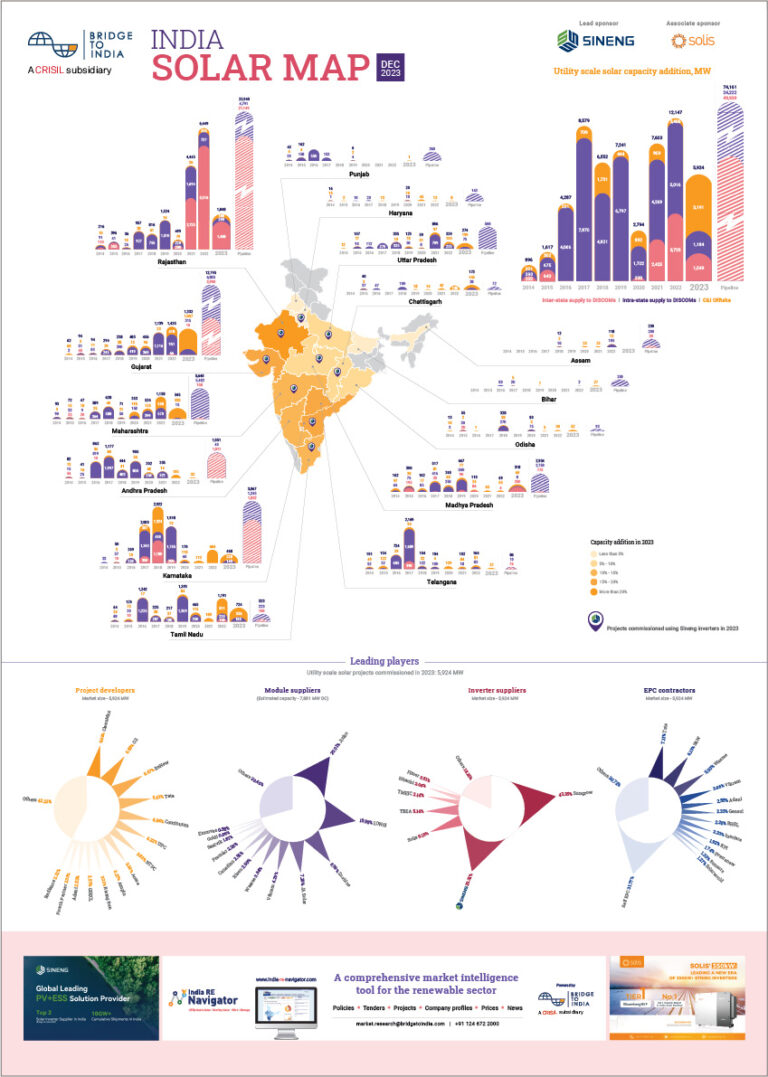A solar power plant rarely produces nameplate capacity power as solar modules operate at their maximum efficiency only during limited peak hours. It has therefore become routine industry practice to over-size DC module capacity, a concept commonly known as DC overloading. It allows solar plants to increase generation during non-peak hours and optimizes overall performance. In 2017, 45% of the projects installed in India used DC overloading of over 20%.
However, DC overloading may create a situation where peak-hour generation crosses capacity constraints of the inverter forcing it to ‘clip off’ extra generation. Optimal DC overloading requires balancing the trade-off between clipping losses during peak hours and extra generation during off-peak hours through the year. This trade-off is complicated by the fact that solar modules degrade over time causing reduction in clipping losses in later years.
Figure: Benefits and losses of higher DC overloading

Figure: DC overloading in India in 2017

Increasing DC capacity reduces effective cost of transmission lines, AC side equipment and soft costs. Choosing optimal DC:AC ratio depends on multiple parameters:
- Irradiation: Higher irradiation results in higher clipping losses and hence, lower DC overloading is suggested for such projects.
- Site temperature: High site temperatures adversely affect power output from the modules. Most utility scale project sites in India have high temperatures (over 40 deg C) during peak-hours, resulting in underperformance of the system and lower clipping losses. Hence, higher overloading may be desirable for such sites.
- Land availability: Increasing DC overloading requires more land. Land availability constraints, in solar parks or other projects, may dictate the amount of overloading.
New project tenders in India in recent years have not prescribed any cap on DC overloading. The trend to use higher DC overloading has increased in India. A few projects have even used overloading of over 50%.
For more details of Indian inverter market and various design and operation issues related to inverters, download our report, Inverter Design and Selection.












